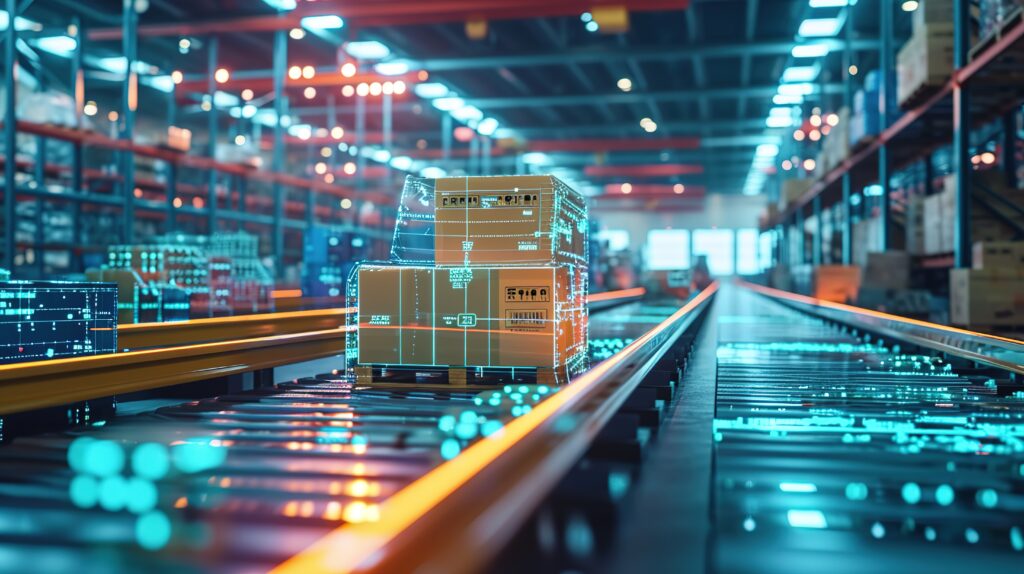
A leading global chemical company, with operations in 36 countries and producing six varieties of chemicals, recently undertook a significant digital transformation to improve its inventory tracking system. Faced with the challenges of managing 23,000 assets across 210 customer facilities, the company sought a solution to enhance efficiency, reduce costs, and streamline its supply chain operations. This case study explores how the company successfully transitioned to a digital monitoring system, revolutionising its tank inventory management.
They Evaluated RFID to Solve It, But to No Avail
The chemical company tried solving it using RFID (Radio Frequency Identification) tags, which involved automatic scanning of the tonner tanks. The problem with RFID however was the extensive infrastructure it required and the lack of accuracy. The heavy infrastructure requirements of RFID in the form of readers, antennas, LAN, and Wi-Fi further limited its use outside their own facilities. Moreover, installing this infrastructure across 210 customer facilities even without accounting for the maintenance aspect, would have taken years.
Therefore, they started looking for innovative solutions and visibility experts to implement a reliable inventory monitoring system.
A complete package from sensors to data actionability enabled them to save time and effort in managing their returnable asset inventory better. It offered them solutions to the problems they were looking to fix for years.
1. Better Inventory Management with Real-time Sensors
With an inventory tracking system using infrastructure-less options like its GoTrac or using its GoBeacon-based Bluetooth Low Energy (BLE) technology, they were able to get real-time location data without any of the hassles of RFID installations. They were able to physically locate the tonner tanks that were in their database and manage their inventory better across their own and customer locations with ease.
Estimated Impact: RFID would have cost the company $3,000 per location to install while the solution did it at a fraction of the cost due to its infrastructure-light and infrastructure-less technology options. Further, installation and maintenance-related site visits across the 210 customer locations were eliminated.
2. Real-time Dispatch/Retrieval Inventory Lists
Real-time location of the inventory at their own facility and at their customer locations, without relying on anyone for scanning, allowed this chemical giant to manage large volumes of dispatches and retrievals effectively. Knowing the location of empty and full tanks at an overall site-level enabled them to reduce loading times.
Estimated Impact: Person hours & detention reduced significantly due to 0 instances of searching for stock prior to loading.
3. Automatic Data Capture and Dispatch Analytics
With real-time location and inventory lists, they could now segregate the tanks that were due for quality checks in advance and make sure that these specific ones were not dispatched to a client location. With the solutions data they know when the last filling was done and which tanks cleared the 48-hour monitoring period, simplifying long and convoluted processes.
Estimated Impact: During the first 3 months of the implementation, there were no instances of inventory mix-ups.
4. Real-time Tank Fill Status Alerts
The real-time location and condition sensing data enabled the estimation of tank status changes automatically even at customer locations, and if a filled tank was still in the empty tank storage area, the system flagged it. These timely warnings not only helped reduce delays in dispatch but also helped eliminate possible hazards.
Further, the new inventory tracking system helped create a process where the chemical company could automatically get a list of all the tanks with quality checks upcoming within the next 6 months, and their real-time locations so they can keep an eye on tanks that are not quality-checked yet. When a tank is to be transported, the rule is to have it filled 48 hours in monitoring so that you are aware if there is any leakage or chance of leakage.
Estimated Impact: Regular dispatch delays had a direct cost impact, which the new solution eliminated. It also helped optimise tank inventory, saving thousands of dollars in working capital. Additionally, they could potentially suffer customer dissatisfaction and brand impact which one cannot place a cost on.
5. Real-time Dashboards to Optimise Vehicle Utilisation
The data and dashboards enabled them to check if there were empty tanks with other customers at nearby facilities that could be picked and loaded in the remaining space available on a truck. This helped optimise truck capacity utilisation and save trips.
Estimated Impact: Even a 10% improvement in truck utilisation reduces your transport cost significantly when you are spending millions of dollars in just transport fees.
With the tank inventory monitoring solution, the chemical company was not only able to save manual scanning time and eliminate human errors, but they also digitalised their tonner & tank management with real-time inventory locations, empty/filled tank alerts, automatic data capture, and useful analytics.
The solution transformed the way this chemical giant dealt with its inventory, helping them make more informed and confident decisions.
Many chemical enterprises are now realising the increasing importance of digitalising their inventory monitoring systems and focusing on better, more accurate, and easily accessible data. This is just the beginning of the transformation of the chemical industry using infrastructure-light or infrastructure-free visibility technologies.
The smart move to stay competitive is to join the digitalisation brigade early and be proactive in reducing costs and errors that could cost you big!

Boost your Supply Chain Quality Compliance